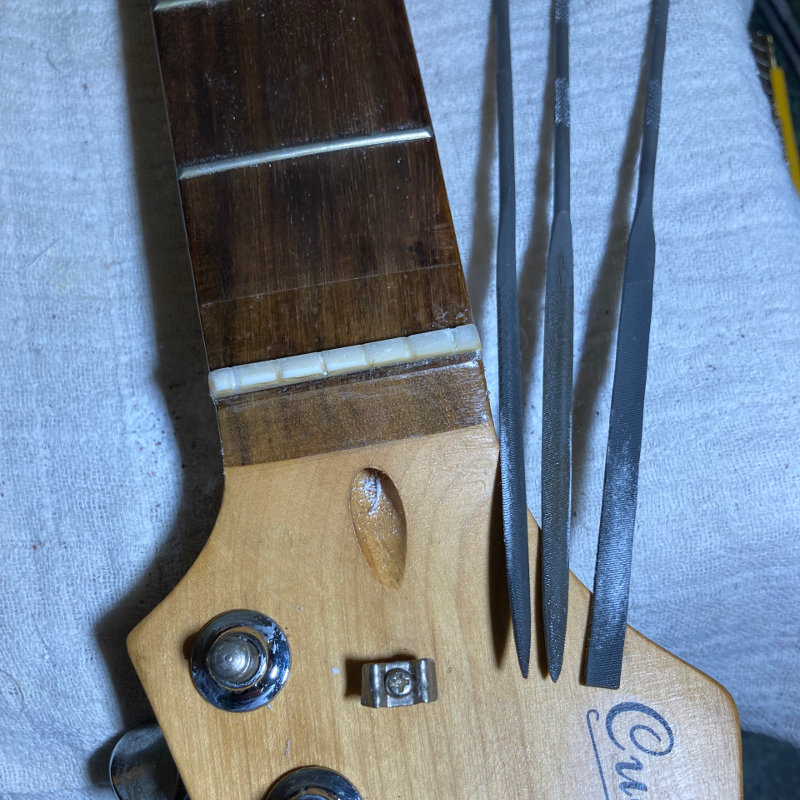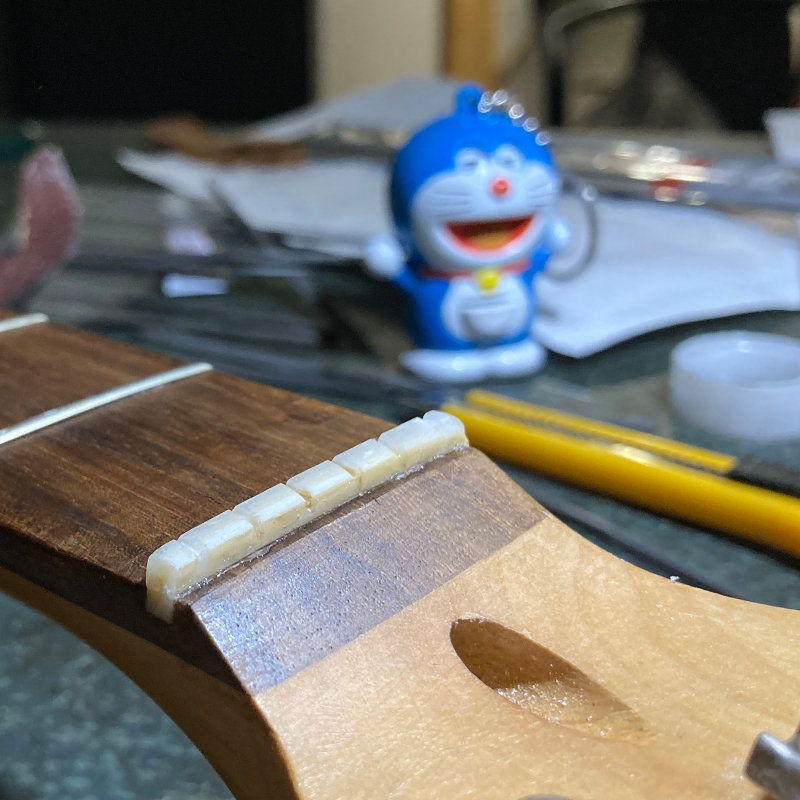DIY Hack: Repairing a guitar nut using superglue and baking soda
The hard, milky compound also resonates well, underlining higher frequencies.

The Magic Compund for Guitar Repairs
If you mix superglue and baking soda, the two chemicals react with each other, resulting in a fast hardening milky mass. You can use this mix to glue parts together that don’t snuggly fit as required by superglue. In my DIY hack I used this combination to repair or re-build the guitar nut from a left-handed guitar when building The Jimi Cuckoocaster.
Baking Soda as in: Sodium Hydrogen Carbonate
What’ commonly known as ‘baking soda’ is sodium hydrogen carbonate and has the chemical formula NaHCO3. This is the stuff you need for this DIY hack. Read the contents of the product before you buy it. Baking powder isn’t baking soda and not all soda is NaHCO3. This compound should also not be confused with sodium carbonate (soda ash) with the chemical formula Na2CO3.
Be prepared and prepare well
Do the right thing and make a couple of test runs with this magic mix. Superglue is always the same chemical compound, but varies in consistency. Some is more runny, some more creamy. That has an impact on how well it mixes with the baking soda, but also if it’s likely to leak and potentially ruin your instrument. So do a couple of tries.
Building a pool for the mix to harden in
The best way to protect your instrument is masking it with tape. Also, the little construction I made from paper to seal off the nut had tape stuck on the inside, so it’s easier to peel off when it’s finished.

 Powder some baking soda on top of the nut. If your superglue is more guey than liquid, make the layers smaller, not all at once.
Powder some baking soda on top of the nut. If your superglue is more guey than liquid, make the layers smaller, not all at once.  Add the superglue on top, layer by layer. And be careful not to use too much. With some toilet paper you can soak up excess glue
Add the superglue on top, layer by layer. And be careful not to use too much. With some toilet paper you can soak up excess glue 
The magic mix hardens fast
You don’t need to wait long for the mix to harden. Count to twenty between adding layers, that should do it.
Remove the excess glue before applying the next layer by soaking it up with toilet paper.
Careful with excess glue!
Only peel of the wrapping when you are sure there is no runny glue to ruin your guitar. In this picture you can also see the tape on the fret board to protect the wood. The resulting milkx plastic is astonishingly hard.
 Sanding works well...
Sanding works well...  ... as does shaping it with other sharp utensils.
... as does shaping it with other sharp utensils. 
Using it for the nut, I have the impression that the higher frequencies come out more prominent compared to the normal plastic nut the guitar came with. All in all: worked well for me. I hope you'll feel the same when trying this.